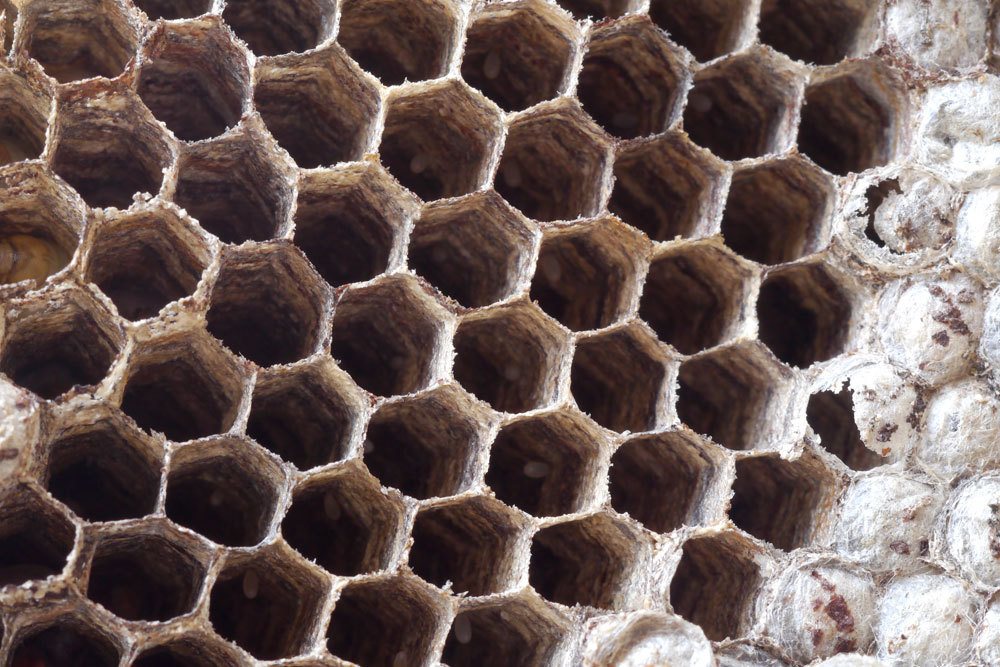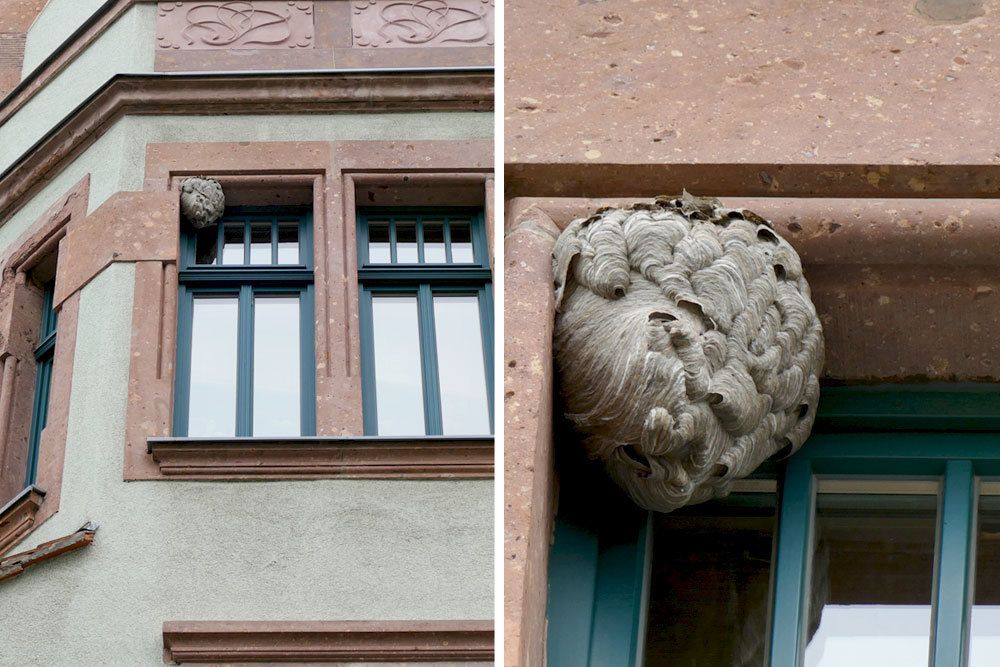The wasps’ dwelling can seem like an architectural marvel. But what material is a wasp nest made of? We clarify.
- Wood and saliva of wasps are the basic building materials
- wasps’ nests can be of different colors
- the nest is used in some cases only for one year
Contents
Materials
When wasps build a nest, they use only two substances for it: Wood and saliva. As an alternative to wood, they can also use other materials. Particularly popular are, for example:

- rotten wood
- Paper
- Cardboard
- bark
- Cellulose
All items that can contain cellulose are used by the wasps. As a result, the nests can vary greatly in color and have interesting color combinations. From a beam to wainscoting or a wooden chair on a balcony, the insects can remove thin layers from almost any unprotected surface and use the materials to build their nests. Firewood stored outdoors, boards, and woody stems of plants are also used by the insects.
Tip: Removing rotten wood and protecting wooden components with varnish or stain reduces the likelihood of wasps building a nest on the property or damaging the structure.
Procedure during construction
The procedure for building a nest is comparatively simple and requires only a few steps:
- After wasps have found a suitable place for the nest, they go in search of available building materials.
- With their chewing tools, they rasp off wood or other cellulose in thin layers.
- The wasps transport the wood to the site of the future nest and mix it with saliva. This acts as a glue, creating a papier-mâché-like mass from the stripped material.
- The wasps model the walls of the nest in layers, gradually creating tunnels.
- After the building material has dried, it hardens and the nest becomes habitable.
The advantages of the material used are:
- versatile formability
- great hardness after drying
- comparatively low weight
- numerous positions are possible
Note: Normal building fabric is usually not gnawed through by the insects. However, unevenness may be found. Cardboard and paper are materials that wasps purposefully gnaw through to create more space for the wasp nest, for example.
Positioning
Wasp nests are often found in protected areas as well as elevated positions. Among them, for example:

- on beams
- in the attic
- hanging freely in bushes
- in cavities of walls
- in roller shutter boxes
- under gutters and roof tiles
Note: The liquid droppings that fall under wasp nests can cause damage to the substrate. Therefore, it is a good idea to cover the area under the nest to prevent discoloration and odor. Cat litter can also be used to contain the liquid and odor.
Frequently asked questions
Are wasp nests allowed to be removed?
Since there are some protected species of wasps and bees and hornets also build nests, a nest should not simply be removed. If it is in an inconvenient location or if the building structure is damaged by the animals, an exterminator, for example, can determine the species and remove the nest if necessary.
Is a wasp nest used more than once?
Whether wasp nests are used several times or only serve as a shelter for one year depends on the type of wasps.
Do wasp nests pose a danger?
Apart from possible damage caused by the nest, wasps can pose a danger if allergies are present. However, with the right behavior and some protective measures, the risk of stings can be kept very low.

